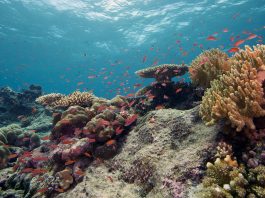A new study has revealed that DNA can help assess the responses of Antarctica’s marine life to climate change.
The oldest marine DNA in deep-sea sediments of the Antarctic continent was discovered in a study led by the University of Tasmania, in collaboration with the University of Bonn. This could be dated to one million years, demonstrating that DNA can be the path to studying the long-term responses of marine life to climate change. This recognition will assist in the assessment of the present and future changes in marine life around Antarctica.
The study appeared in the journal Nature Communications.
Studying Antarctica’s marine life with sedimentary ancient DNA
As Antarctica is extremely vulnerable to climate change, it is critical that researchers study the past and present responses of the marine ecosystem and polar marine life to changes in the environment.
A new technique, called sedimentary ancient DNA (sedaDNA) analysis, enables researchers to interpret what type of marine life once lived in the ocean, and when they lived there. When the composition of this has gone through major shifts, it can often be related to climate change. This knowledge can allow researchers to make predictions about how Antarctica’s marine life will respond to climate change, now and in the future.
Data revealed by the study
A team of researchers used sedaDNA to analyse sediments acquired during the IODP Expedition 382 ‘Iceberg Alley and Subantarctic Ice and Ocean Dynamics’ in 2019. They used this to look at the changes in the structures of marine life in the Scotia Sea over the last one million years.
The team first undertook thorough contamination control to ensure that the sedaDNA signals were authentic. This was ensured in the investigation of characteristic age-related damage patterns in the recovered DNA fragments. Ancient DNA as old as one million years was detected.

Dr Linda Armbrecht, the lead investigator from the University of Tasmania, Australia, commented: “This comprises by far the oldest authenticated marine sedaDNA to date.” Diatoms as primary producers were discovered within the detected organisms, whose DNA was found to be half a million years old.
The analysis revealed that diatoms were abundant during warm climatic periods, approximately 14,500 years ago, the last climatic change in the Scotia Sea’s food web.
“This is an interesting and important change that is associated with a world-wide and rapid increase in sea levels, and massive loss of ice in Antarctica due to natural warming,” added Dr Michael Weber, second author of the study from the University of Bonn.
It is thought that the warming caused an increase in ocean productivity around Antarctica.
Future uses of the analysis
The study has shown that marine sedaDNA analyses can be extended to hundreds of thousands of years. This will assist the study of changes in marine life on an ecosystem-wide scale and paleo-productivity throughout many ice-age cycles.
The observed periods of natural climate change can shed light on the current and future impacts of human-induced climate warming and reveal how the ecosystem could respond to the changes.









